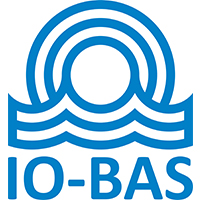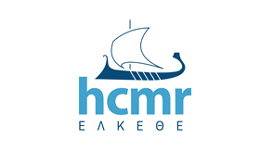Wave height and period statistics
Type of resources
Topics
INSPIRE themes
Keywords
Contact for the resource
Provided by
Years
Formats
Representation types
Update frequencies
status
Scale
-

HF Radar System
-

SMARTBUOY is an autonomous data buoy used by SBI and the MI for testing environmental and meteorological sensors and to efficiently collect metocean time series. All data is transferred to the MI via a variety of wireless communication options and onto users through the MI online data portal or specialized access. Different mooring designs are adaptable to any specific testing environment; the buoy allows for easy integration of sensors and instruments into the available power and data transmission facilities, with deployment in air, at the ocean surface or deeper in the water column. The buoy is part of the Galway Bay Marine And Renewable Energies Test Site (GB MARETS), previously known as SmartBay Marine Test and Validation Facility (SMARTBAY TDS)
-

COSYNA provides near real-time data from integrated observations and model results. The observations comprise a variety of in situ techniques (e.g. FerryBox, Gliders, Cabled Underwater Observatories) as well as remote sensing from shore by radar and from space by satellite. Key physical, sedimentary, geochemical and biological parameters are observed at high temporal resolution in the water column and the upper and lower boundary layers. COSYNA’s modelling part consists of nested models with different grid sizes for hydrography (salinity, waves, currents), for suspended matter and for biogeochemical and ecosystem processes. Sophisticated data assimilation procedures, i.e. continuous corrections of the models by observations, improve the reliability of now-casts and short-term forecasts. All data and plots are generally available for download through the data portal (http://codm.hzg.de/codm/). FerryBox data can be directly accessed via the data portal ferrydata.hzg.de where different vizualizaton tools are available (e.g. single transect, pool data along a certain transect for a longer time period or time-series at certain locations). Furthermore, all datasets can be exported in ASCII (tab separated tables) or NetCDF format and downloaded. COSYNA’s motivation is bridging the gap between operational oceanography and the various users of forecasts of the marine state. For further outreach to stakeholders and the wider community an app has been developed for the most common platforms.
-

SOCIB Fixed Platform
-

Oceanographic data is available in real time and delayed mode from across the NOMOS facilities. Including physical and biogeochemical variables from platforms such as moorings, floats, ferryboxes and coastal stations. The data can be accessed through Bulgarian Oceanographic Data Centre. In addition a variety of interactive tools to help visualize the data are available through the BGODC website. All data are available for download.
-

The seabed cabled observatory EMSO-Molène was deployed off shore 2 km north of Molène in the marine protected area “Iroise Marine Park”. MOLENE is an EMSO testing site at depth 18 meters, dedicated to sensors and equipment in-situ and long-term qualification. The instrumental module is a removable device that includes the electronic core of the observatory: the “Node” and the “Junction Box”. The Node inputs an optical signal and converts it into electrical. On the node output, the Junction Box relays instructions, collects data, protects the equipment in case of electrical malfunction and provides failure warnings. Remote control of the instruments and data recovery. Network throughput: 1 Gbit/s between the sensors and the relay station, restricted between the island and Brest. A land-based server transmits data to the subscriber. Data time stamping: GPS clock, NTP/PTP Network, Network Attached Storage. Available for the instruments: 6 identical inputs (Subconn MCBH12M, Micro Bulkhead, 12 contacts), voltage: 15V and 48V, power supplied for the 6 connections: 75 W under 15V and 75W under 48V. Seawater physico-chemical measurements are performed by the platforms on the site (high frequency sampling).
-

Beach Lifeguards (SocorristaIB) Seaboard (http://seaboard.socib.es/lifeguard) and SocorristaIB mobile app (https://play.google.com/store/apps/details?id=com.socib.lifeguards&hl=en) provide atmospheric and oceanographic variables interpolated from numerical prediction models (oceanographic and atmospheric) at the points closest to the Balearic 352 beaches where there lifeguard service mesh.
-

Mykonos
-

The Accessible Wave Energy Resource Atlas 2005 describes an initial comparison between several years of hourly wave forecasts (using WAM) on a grid of points located off the Irish coast with corresponding records from a number of buoys installed in recent years. The report contains 31 figures, 43 tables and 127 graphs and was based on the analysis of approximately 51 million individual forecast and recorded values of significant wave height and wave period. The Accessible Wave Energy Resource Atlas dataset contains 24 GIS polygon files including calculations of annual average wave height and period, seasonal/annual mean technical power resource (MW), seasonal/annual mean theoretical wave energy resource (MW per hour), seasonal average power flux (kW) from Pelamis wave energy device and seasonal/annual mean technical energy (GW per hour). The data was collected within the boundary of the Irish Exclusive Economic Zone including the North Atlantic Ocean, Irish Sea, Saint Georges Channel and Celtic Sea. The report and atlas data was published in December 2005. Using Pelamis, a floating wave power converter developed by Ocean Power Delivery Ltd. in Scotland, available in 2005, allowed the mapping of the mean seasonal and annual wave energy potential around Ireland. The atlas was produced with a view to documenting the differing levels of resource that exist around the coast as an aid to policy planning and development and in line with its objective of marine resource development and wealth creation. The Accessible Wave Energy Resource Atlas was commissioned from ESB International (ESBI) by the Marine Institute (MI) in late 2004 with support from Sustainable Energy Authority Ireland (SEAI) and produced in December 2005. The data generated was considered a complete representation of results produced by the wave model.
-

POSEIDON is an operational marine monitoring, forecasting and information system for the Greek Seas. The observing component is a distributed infrastructure made by three coastal buoys (Saronikos buoy-SB, Heraklion Coastal Buoy-HCB and Athos buoy-AB) and one FerryBox (PFB). A calibration laboratory is supporting the observing activities. The Saronikos buoy is equipped with meteo, T, C/S, wave sensors and current meter, is moored in one of the most eutrophic areas in Greece greatly affected by the effluents sewage treatment plant of Psitalia and the Anthropogenic activities in the wider Athens -Piraeus urban environment. HAB’s are frequent in some parts of the Gulf while clear trophic gradients are observed.
 Metadata catalogue
Metadata catalogue